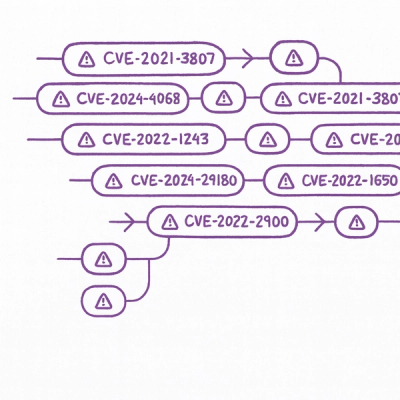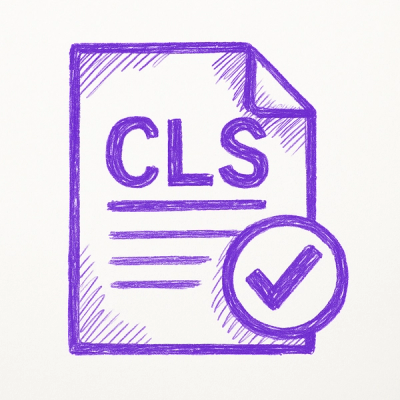
Security News
Static vs. Runtime Reachability: Insights from Latio’s On the Record Podcast
The Latio podcast explores how static and runtime reachability help teams prioritize exploitable vulnerabilities and streamline AppSec workflows.
Supply Chain Security
Vulnerability
Quality
Maintenance
License
A ruby gem that uses the Rails asset pipeline to include the jQuery Slick plugin by Ken Wheeler (https://kenwheeler.github.io/slick/).
If you are using Rails 6 with Webpacker then you don't need this gem (install Slick directly from NPM instead). Check out this sample app for more info.
This gem was created in 2014 and since then it has been downloaded more than 2 million times. I'm glad you guys found it useful! However, it's time to move on. Rails 6 uses Webpacker as a de-facto standard to bundle assets therefore this gem became redundant for setups that utilize Webpacker or other bundlers like esbuild. Moreover, Rails 7 is coming in December 2021 and this new version uses another modern approach: you can rely on jsbundling-rails and choose your favourite bundler (Webpacker, esbuild, rollup). Basically, it means that it's not recommended to install front-end packages as Ruby gems anymore.
Another thing to mention is that Slick itself was abandoned by its maintainer: there are no new releases since 2018. Slick was a great solution back in the day but now it was superseded by other modern libraries that do not rely on jQuery.
Therefore, jquery-slick-rails is officially deprecated since December, 2021. Version 1.10.0 is the final release I'm going to roll out: it is tested with Rails 7 so it should still work fine with older setups. But once again: it's very much recommended to migrate to jsbundling-rails or Webpacker.
Thank you for your attention, and hopefully you'll find my other solutions useful.
Ilya Bodrov-Krukowski
Add this line to your application's Gemfile:
gem "jquery-slick-rails"
And then execute:
$ bundle
Or install it yourself as:
$ gem install jquery-slick-rails
NOTE: this is a jQuery plugin so you will also need the jquery-rails gem (it is not added by default starting from Rails 5.1):
You will need to add this line into your application.js:
//= require jquery.slick
Then into application.scss:
@import 'slick';
or into application.css:
/*
*= require slick
*/
Starting from version 1.4.0 Slick provides an optional theme, so if you want to employ default styling, include
the following line into application.scss:
@import 'slick-theme';
or into application.css:
/*
*= require slick-theme
*/
Check out this repo showing how to use Slick carousel with Rails app with and without Webpacker (it also shows how to use the plugin with Turbolinks).
If you are using Slick with Turbolinks, you might run into some problems with the browser's "back" button. If that happens, the following solution might help. Add this code to your layouts/application.html.erb:
<head>
<% if content_for?(:head) %>
<%= yield(:head) %>
<% end %>
</head>
And then on any page that has Slick:
<% content_for :head do %>
<meta name="turbolinks-cache-control" content="no-cache">
<% end %>
The idea is that we are opting the page out of caching, as Turbolinks uses it during restoration visits (that is, when you click "back").
Another solution was to employ the unslick method to prepare your document before Turbolinks caches it:
jQuery(document).on('turbolinks:before-cache', function() { $('.scroller').slick('unslick') })
However, this does not seem to work anymore - maybe because Slick has lots of opened issues related to unslick.
Read more on StackOverflow.
Run
$ bundle install
and then
$ rake test
git checkout -b my-new-feature)git commit -am 'Added some feature')git push origin my-new-feature)This plugin is licensed under the MIT License.
Copyright (c) 2017 Ilya Bodrov
FAQs
Unknown package
We found that jquery-slick-rails demonstrated a not healthy version release cadence and project activity because the last version was released a year ago. It has 1 open source maintainer collaborating on the project.
Did you know?

Socket for GitHub automatically highlights issues in each pull request and monitors the health of all your open source dependencies. Discover the contents of your packages and block harmful activity before you install or update your dependencies.

Security News
The Latio podcast explores how static and runtime reachability help teams prioritize exploitable vulnerabilities and streamline AppSec workflows.

Security News
The latest Opengrep releases add Apex scanning, precision rule tuning, and performance gains for open source static code analysis.

Security News
npm now supports Trusted Publishing with OIDC, enabling secure package publishing directly from CI/CD workflows without relying on long-lived tokens.